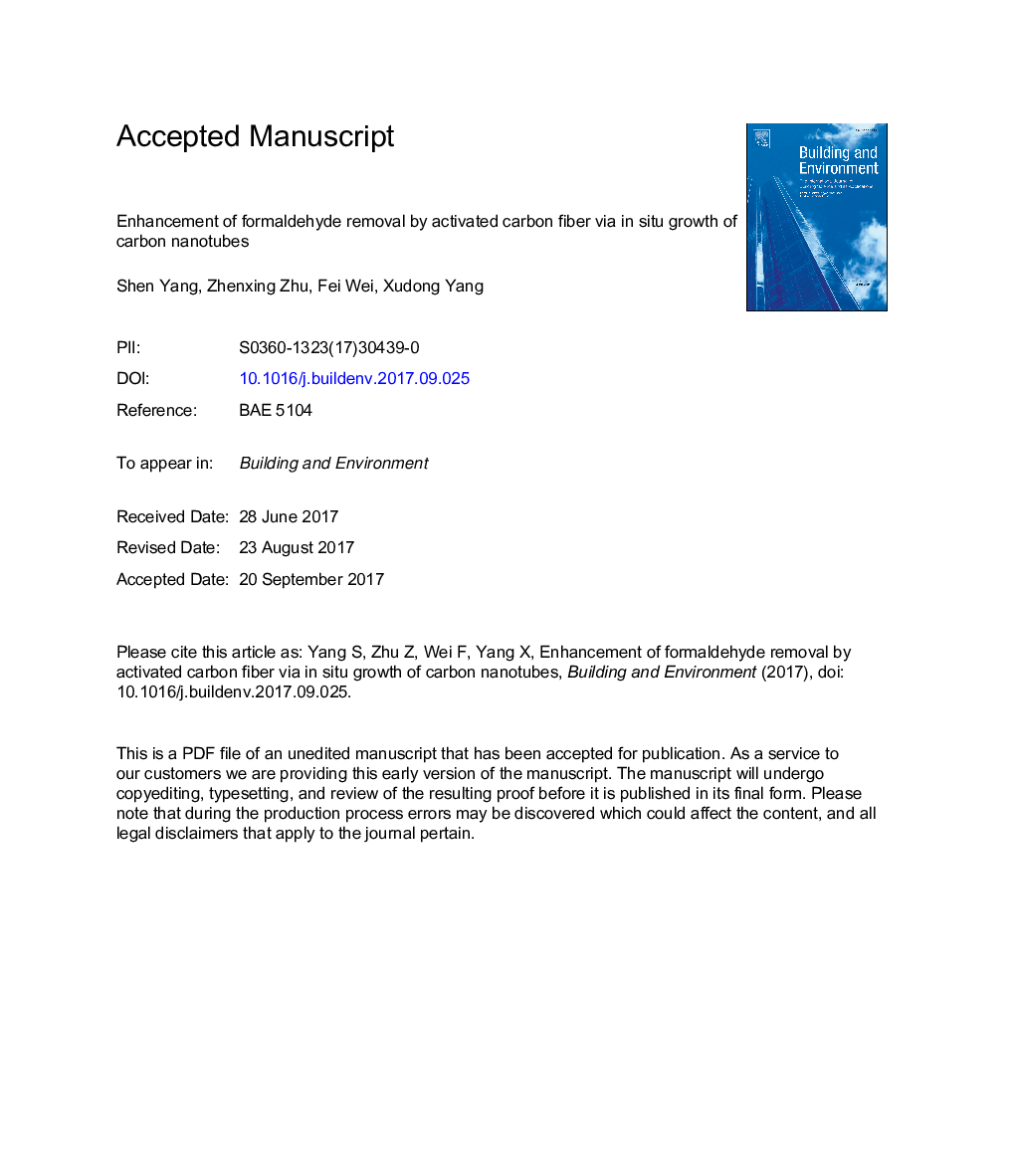| Article ID | Journal | Published Year | Pages | File Type |
|---|---|---|---|---|
| 6698553 | Building and Environment | 2017 | 25 Pages |
Abstract
Formaldehyde is a known gaseous pollutant that has a carcinogenic effect on human health. Carbon nanotubes (CNTs) are herein proposed as a potentially new technology for the removal of formaldehyde from indoor air. A CNT/activated carbon fiber (ACF) filter medium was fabricated via in situ growth of CNTs on a pristine ACF by using the chemical vapor deposition method. The formaldehyde removal efficiencies of the CNT/ACF and the ACF filter media were tested with a low inlet formaldehyde concentration. The amounts of formaldehyde adsorbed on the materials were calculated and compared, and the pressure resistances of the two filter media were also determined. The results showed that the CNT/ACF material had a higher initial formaldehyde removal efficiency and removed three times more formaldehyde per filter weight than the ACF, while the pressure resistance of the former was only 50% higher than that of the latter. Compared with the recently reported fiber filter media in the literature, the CNT/ACF material exhibited a higher formaldehyde adsorption capacity. In comparison with the previously reported carbon nanotube/quartz fiber film-based gas filter medium, the CNT/ACF material demonstrated superior formaldehyde adsorption capacity and a significantly lower pressure resistance.
Related Topics
Physical Sciences and Engineering
Energy
Renewable Energy, Sustainability and the Environment
Authors
Shen Yang, Zhenxing Zhu, Fei Wei, Xudong Yang,
